This post may contain affiliate links. Please read our disclosure policy.
This easy and flavorful small batch pizza dough is perfect when you’re making one personal pizza. It comes together quickly and makes a delicious base for all your favorite toppings.
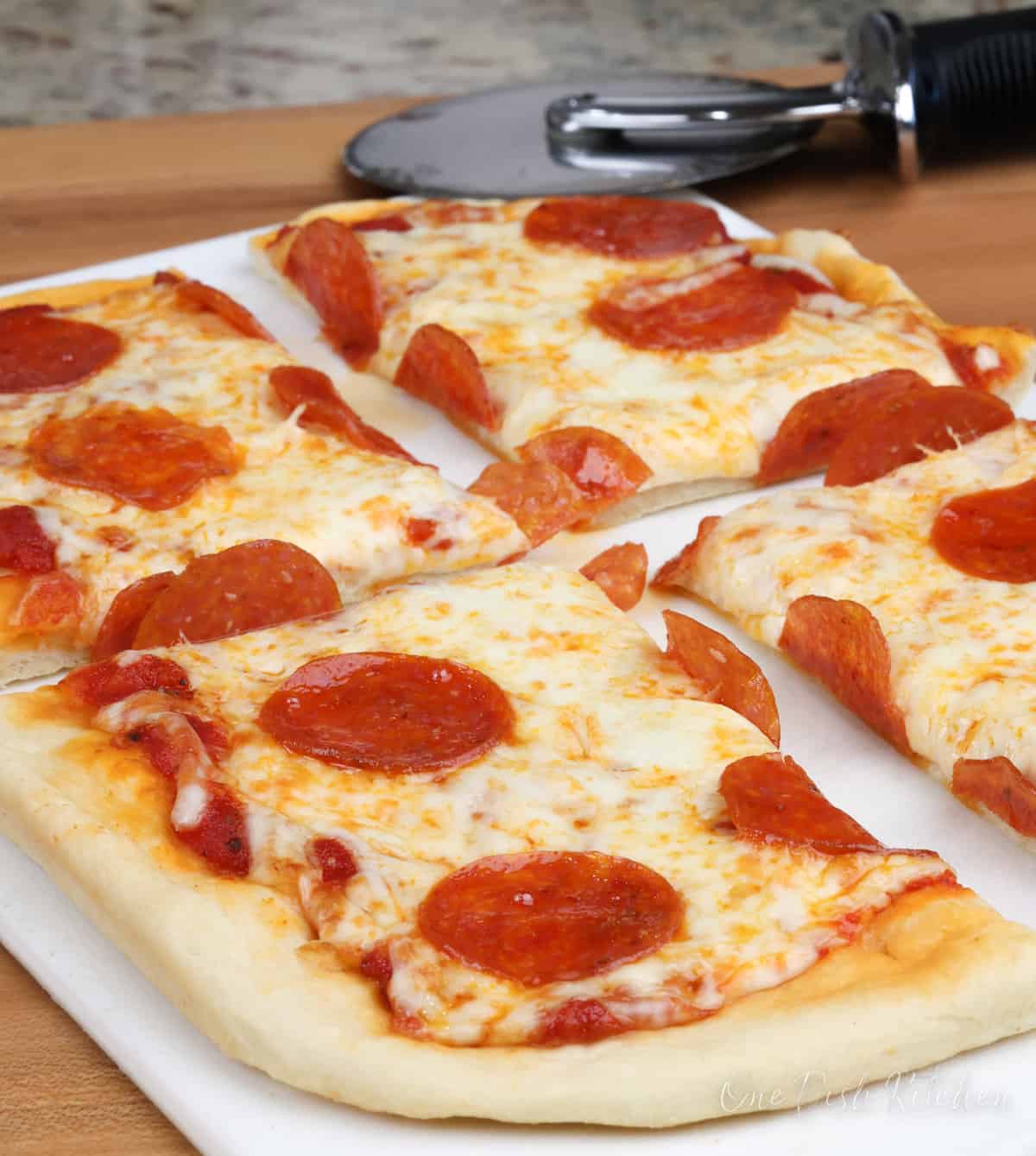
Why You’ll Love This Recipe
- Customizable Texture: Make it thin and crisp or soft and chewy.
- Fresh Flavor: Tastes better than any store-bought crust.
- Simple to Make: Easy steps with no special tools needed.
- Great for Two: Double the recipe for a second pizza.
This small batch pizza dough has been my go-to for years. I love how it comes together with just a few pantry staples and gives me the perfect amount for a personal pizza—no waste, no leftovers. It’s one of those recipes that makes cooking for yourself feel a little more special, and I hope it becomes a favorite in your kitchen too.
Love pizza? Try these single serving and small batch favorites:
- Detroit Style Pizza
- Crustless Pizza Bowl
- French Bread Pizza
- Portobello Mushroom Pizza
- Pepperoni Pizza
- Crustless Pizza Quiche

Ingredients

If you have any ingredients leftover from this individual pizza dough recipe, check out our Leftover Ingredients Recipe Finder.
- Yeast: Use active dry or instant yeast. Instant yeast like Platinum Yeast from Red Star is my go-to for convenience, while Fleischmann’s Active Dry Yeast is another solid choice. Check the “best if used by” date to ensure freshness. Leftover yeast? Use it in a small loaf of French Bread.
- Water: Use 1/3 cup of warm water between 100°F and 110°F to activate the yeast. Avoid water hotter than 130°F, as it can kill the yeast.
- Flour: All-purpose flour works well, but for a chewier crust, try bread flour.
- Sugar: Feeds the yeast and helps tenderize the dough for that perfect soft yet crisp texture.
- Salt and Garlic Powder: Enhance the flavor of the crust.
- Olive Oil: Adds richness and depth.
Best Yeast For Personal Pizza Dough
You have two excellent yeast options for this single serving pizza dough recipe. Here’s what to know about each:
- Active Dry Yeast: Requires activation. Dissolve it in warm water (100°F to 110°F) before mixing it with the flour.
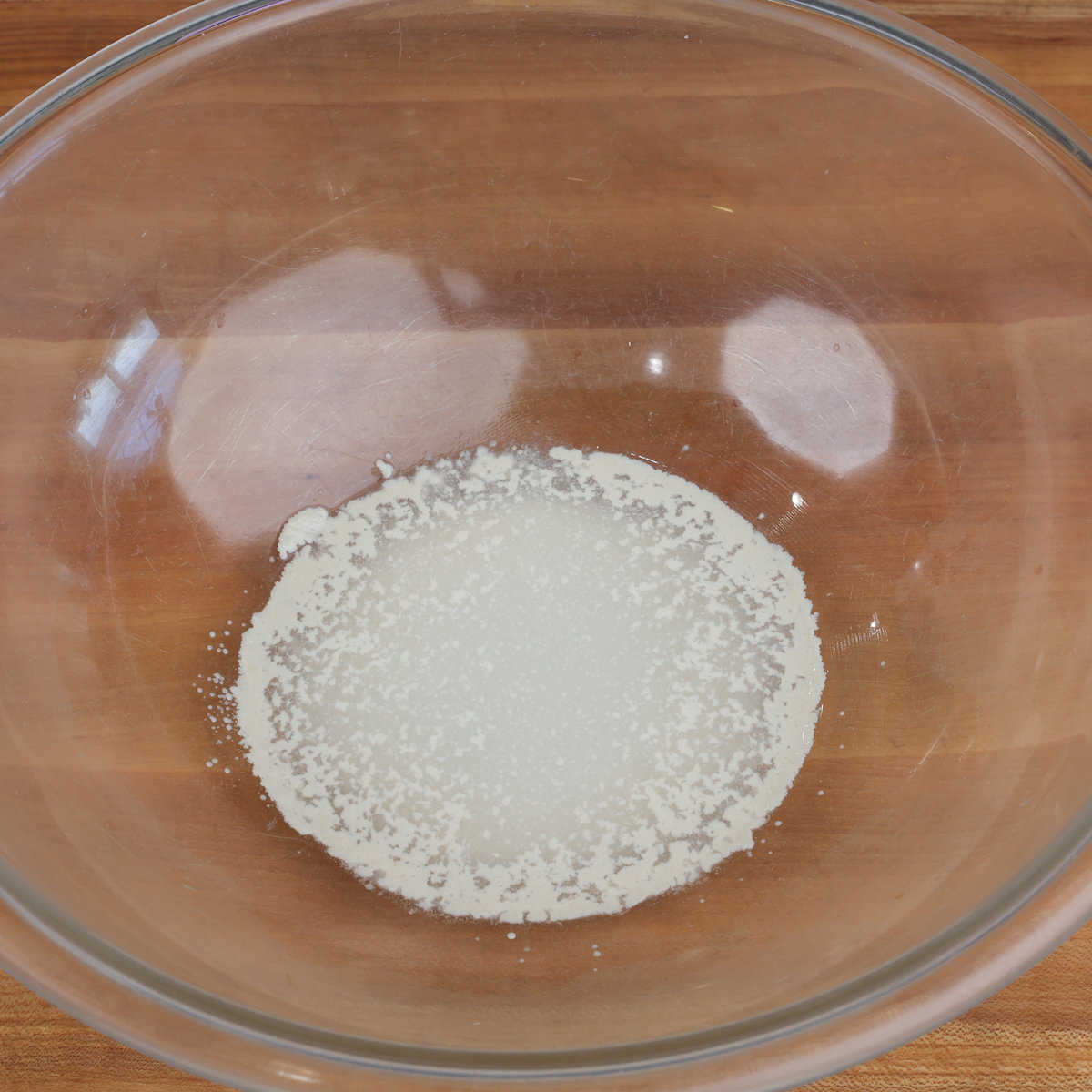
- Instant Yeast: Also called quick-rise yeast, this type doesn’t need activation and can be mixed directly with the dry ingredients.
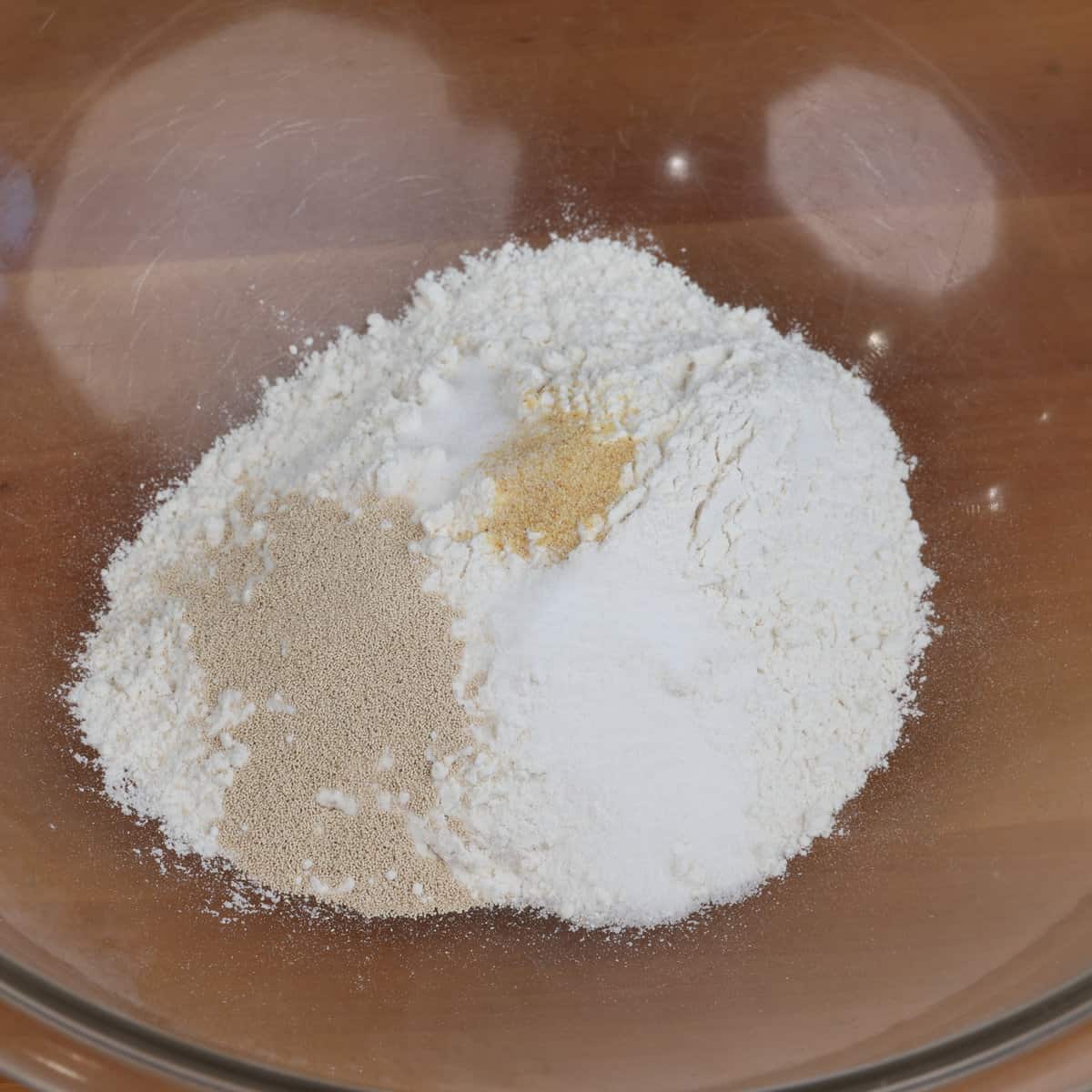
Both work wonderfully, so pick the one that fits your time and preferences!
Pizza Recipe Variations
Explore these easy and delicious ways to customize your single serving pizza dough:
- Pepperoni Pizza: Spread 1/2 cup of pizza sauce, marinara, pomodoro sauce, or tomato sauce over the dough. Top with shredded mozzarella and pepperoni slices. Bake until the crust is golden and the cheese is melted.
- Classic Margherita Pizza: Layer pizza sauce, shredded mozzarella, and freshly torn basil leaves. Bake until the crust is crisp and the cheese is bubbly.
- Hawaiian Pizza: Add a layer of sauce, shredded mozzarella, diced pineapple, and 1–2 ounces of sliced or diced ham. For extra flavor, sprinkle on red pepper flakes before baking.
Before You Begin: How to Measure Flour Accurately
- Measuring flour correctly is key for soft, stretchy dough. Too much flour can make the dough dry or tough.
– Use a digital scale if possible (1 cup = 138 grams).
– If using measuring cups:
- Stir the flour to loosen it.
- Spoon it into the cup, then level off with a knife. Avoid scooping directly from the bag—it packs in too much flour.
How To Make Personal Pizza Dough
These photos and instructions help you visualize how to make this single serve pizza dough. See the recipe box below for ingredient amounts and full recipe instructions.
Note: If you’re using instant yeast, skip the activation step and mix the flour, instant yeast, sugar, salt, and garlic powder together. Then add warm water and olive oil and proceed with the rest of the instructions.
- Warm the Water
- Pour 1/3 cup of warm water into a large bowl.
Pro Tip: Use an instant-read thermometer to check that the water is between 100-110°F. If you don’t have a thermometer, the water should feel warm, not hot, to the touch.
- Activate the Yeast
- Sprinkle the yeast into the water. Let it sit for about 2 minutes until bubbles form, indicating the yeast is active.
- Mix in Flavor Enhancers
- Stir in the sugar, salt, garlic powder, and olive oil until combined.
- Add the Flour
- Gradually mix in the flour until a dough starts to form. If the dough feels too sticky, add a small amount of flour.
- The dough may look lumpy at first but will smooth out after kneading.
- Gradually mix in the flour until a dough starts to form. If the dough feels too sticky, add a small amount of flour.

- Knead and Let the Dough Rise:
- Transfer the dough to a lightly floured surface and knead for about 3 minutes until smooth and elastic, adding flour sparingly if it’s too sticky. Lightly grease a large bowl, place the dough inside, and turn it to coat. Cover and let it rise in a warm, draft-free spot for about 30 minutes, or until doubled in size.
Pro Tip: For a warm spot, place the bowl in your oven with just the oven light on.
- Deflate and Shape
- Once risen, punch down the dough to release air. Transfer it to a floured surface and shape it into a circle or press it into a greased small 9×13-inch quarter-sheet pan.
- Form the Crust
- Pinch or fold the edges to create a crust.
- Prevent Bubbles
- Use a fork to gently prick the surface of the dough to prevent air bubbles from forming during baking.

- Add Toppings and Bake
- Brush the crust with olive oil, then add your favorite sauce and toppings. Bake in a preheated oven at 400°F for 18-20 minutes, or until the cheese is melted and the crust is golden brown.

This recipe yields enough dough for one 12-inch round thin-crust pizza or one 9×13-inch thin-crust rectangular pizza.
Expert Tips
- Check Your Yeast: If using active dry yeast, dissolve it in warm water and make sure it bubbles. If it doesn’t, your yeast may be inactive—use a fresh packet.
- Freeze for Later: Bake the crust, let it cool, then wrap and freeze. When ready to use, thaw while the oven preheats, add toppings, and bake for about 15 minutes.
- Avoid a Soggy Crust: Use a light hand with sauce and pat wet toppings dry before adding them to prevent excess moisture.
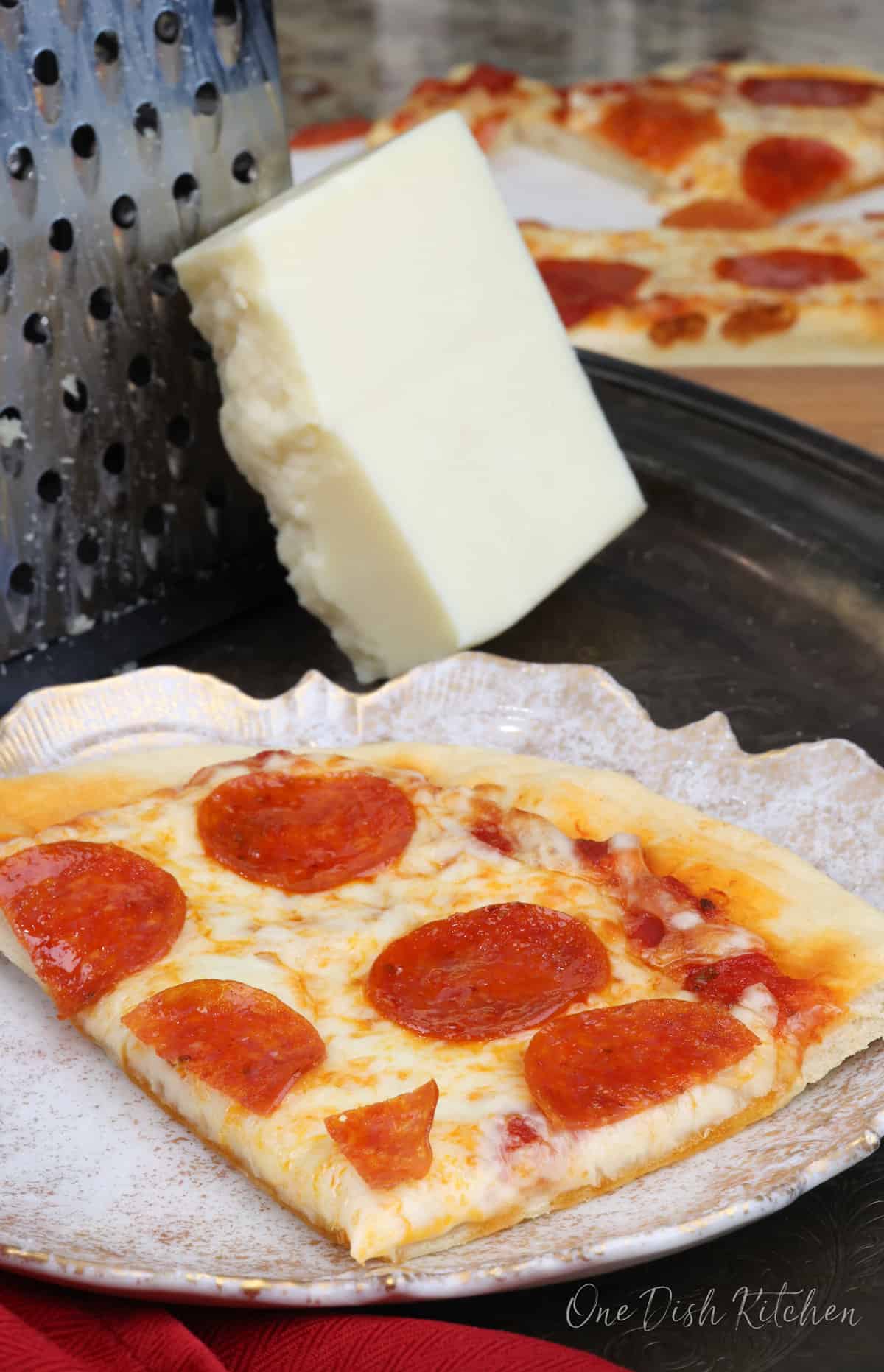
Frequently Asked Questions
Yes. Prepare the dough, shape it into a ball, and lightly coat it with olive oil. Place the dough in a covered bowl and refrigerate for up to 3 days.
When you’re ready to use it, let the dough sit at room temperature for about 30 minutes. Punch it down and allow it to rest, covered, for another 20 minutes before shaping and adding toppings.
Yes, you can freeze pizza dough. After it rises, shape it into a ball, lightly coat it with olive oil, and place it on a plastic wrap– or parchment-lined sheet pan. Freeze for 2 hours, then transfer to a plastic bag with the air pressed out. Store for up to 3 months. Thaw overnight in the fridge, then let it come to room temperature before shaping.
Once the dough is ready, spread your favorite pizza sauce over the crust, add your desired toppings, and bake in a preheated oven at 400°F for 15-20 minutes.
Oven: Bake at 350°F for about 10 minutes.
Stovetop: Heat in a skillet over medium heat with a lid for a few minutes.
Microwave: Place a slice on a microwave-safe plate with a small cup of water nearby and heat in 15-second intervals.
Ways To Use Leftover Ingredients
If you have any ingredients leftover from this recipe, check out our Leftover Ingredients Recipe Finder or you might like to consider using them in any of these single serving and small batch recipes:
If you’ve made this small batch pizza dough or any other recipe from One Dish Kitchen, I’d love to hear your thoughts! Please rate the recipe and share your feedback in the comments below.
If you take a picture please tag us on Instagram (@onedishkitchen) we’d love to see it!
Personal Pizza Dough

Ingredients
- ⅓ cup warm water (between 100-110°F)
- 1 teaspoon active dry yeast * see notes below if using instant yeast
- ½ teaspoon sugar
- ¼ teaspoon salt
- ¼ teaspoon garlic powder
- 1 tablespoon olive oil plus 1-2 teaspoons more for greasing the bowl and brushing over the top of the pizza dough before baking
- 1 cup all-purpose flour
Instructions
- Add Warm Water: Pour 1/3 cup of warm water into a large bowl.Pro Tip: Water should be between 100°F and 110°F. If you don’t have a thermometer, it should feel warm—not hot—to the touch.
- Add Yeast: Sprinkle the yeast over the water and let it sit for about 2 minutes, until bubbles form.
- Add Remaining Ingredients: Stir in the sugar, salt, garlic powder, and olive oil.
- Mix in Flour: Gradually add the flour, stirring until a shaggy dough forms. If it feels too sticky, add a little more flour.Note: The dough may look lumpy—it will smooth out during kneading.
- Knead the Dough: Transfer the dough to a lightly floured surface and knead for about 3 minutes until smooth and elastic. Add flour only if needed.
- Let the Dough Rise: Place the dough in a lightly greased bowl, turn it to coat, and cover. Let rise in a warm, draft-free spot for about 30 minutes, or until doubled in size.Pro Tip: You can use your oven with just the light on to create a warm environment.
- Shape the Dough: Punch down the dough, then transfer it to a floured surface. Shape into a 12-inch circle or press into a greased 9×13-inch pan.Pro Tip: If the dough resists shaping, cover and let it rest for 10 minutes.
- Form the Crust: Pinch or fold the edges to create a border.
- Dock the Dough: Use a fork to gently prick the surface to prevent air bubbles while baking.
- Top and Bake: Brush the crust with olive oil, add sauce and toppings, and bake in a preheated 400°F oven for 18–20 minutes, or until the crust is golden and the cheese is melted.
Notes
- Check Your Yeast: If using active dry yeast, dissolve it in warm water and make sure it bubbles. If it doesn’t, your yeast may be inactive—use a fresh packet.
- Freeze for Later: Bake the crust, let it cool, then wrap and freeze. When ready to use, thaw while the oven preheats, add toppings, and bake for about 15 minutes.
- Avoid a Soggy Crust: Use a light hand with sauce and pat wet toppings dry before adding them to prevent excess moisture.
- Combine the flour, instant yeast, sugar, salt, and garlic powder in a large mixing bowl.
- Stir in the warm water and olive oil until the mixture comes together.
- Proceed with the rest of the recipe as directed.
Nutrition
The information shown is an estimate provided by an online nutrition calculator. It should not be considered a substitute for a professional nutritionist’s advice.
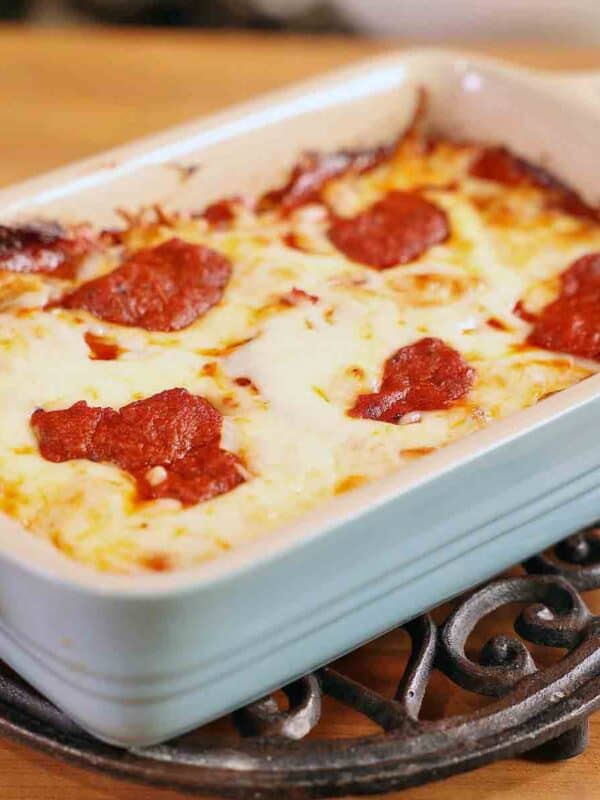
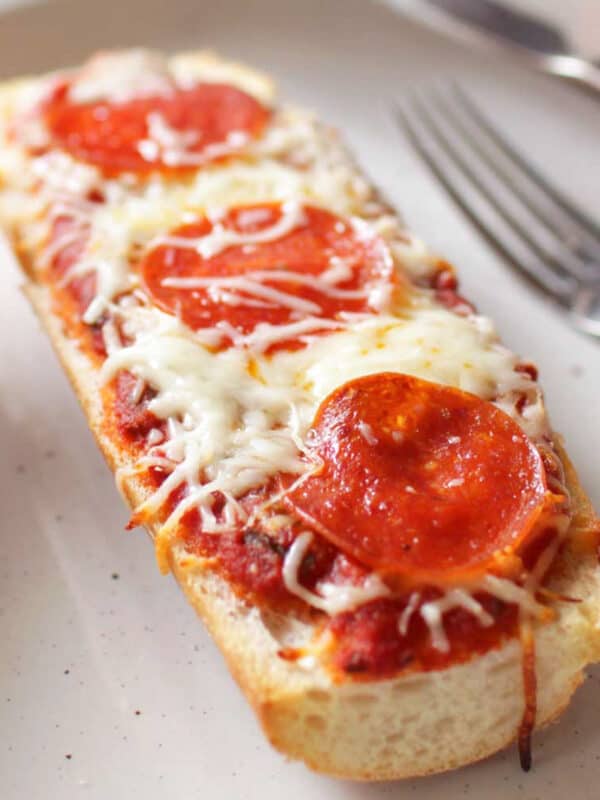
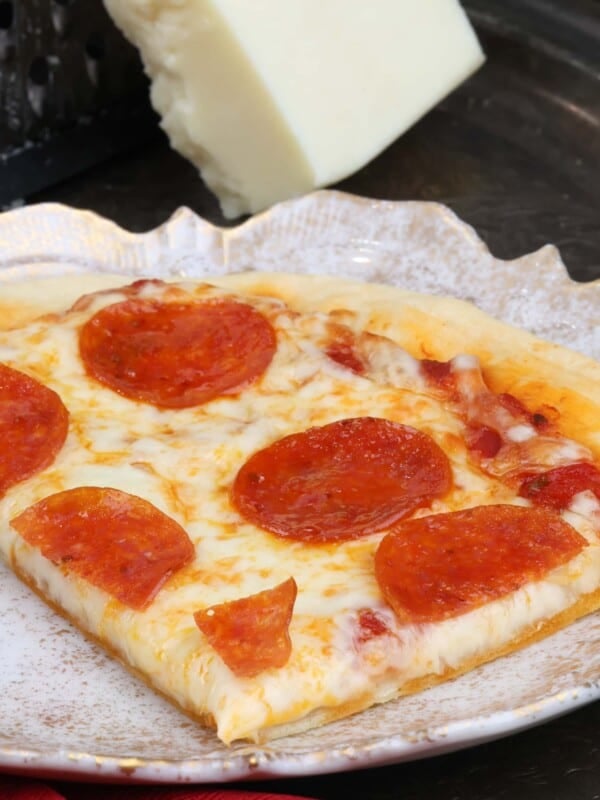
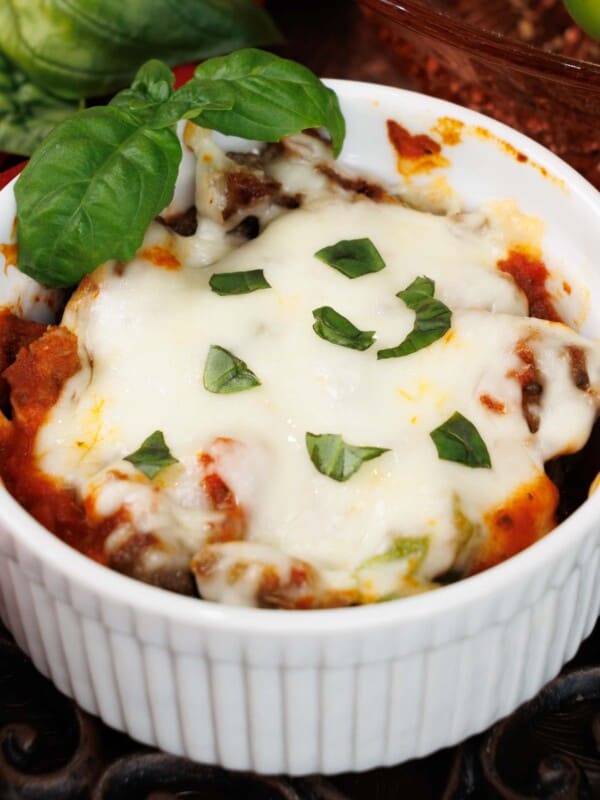


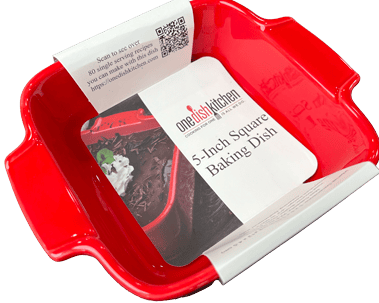










Just tried this dough and it came out perfect!
Looks like a great recipe! If I’m making this for a bigger family and want to double the recipe, should I split it into 2 bowls to let it rise?
No need to split it into two bowls; just use a larger bowl to accommodate the extra dough. Make sure it has plenty of room to rise.
Terrific recipe. If you wanted vegetables on this pizza, in addition to the pepperoni, how much would you use of each vegetable? Thank you.
I would use between 1/4 cup and 1/2 cup of chopped vegetables, total.
Excellent Hawaiian topping. A slight alternative for variety – exchange red pepper flakes with thinly sliced Jalapeno coins.
Perfect Sunday afternoon project for my 4 year old grand daughter and me. Made just enough for us and was great and simple. Thanx !!
So happy to find this recipe. Now I can have pizza whenever I want. The dough came together quickly, rolled out easily, and baked up perfectly. I used the proofing mode on my oven and convection bake. I already had some frozen homemade sauce so it was very easy. I’ll be keeping toppings on hand all the time. I love this site! Thank you.
Thank you so much, Jill!
Incredible flavor and very easy ti make! I used roasted garlic powder and added 1/8 teaspoon Italian seasoning to the dough. This also makes a wonderful calzone!! ❤️
I’m so glad you enjoyed the pizza dough, thank you so much for your feedback.
how would you adapt this for a small personal pan pizza like pizza huts ?
This small batch pizza dough recipe yields enough dough to make one 12-inch round thin-crust pizza, To make a smaller pizza, don’t roll the dough out as much for a thicker crust.
Your recipes are wonderful and have enjoyed using them for years. Recently purchased your book on Amazon. I see you are now selling dishes again which is fantastic since I couldn’t locate some of the smaller items when I first started using your website. Thank you for bringing the joy of cooking back to me!
Terrific recipe.